Cuvier’s Gazelle
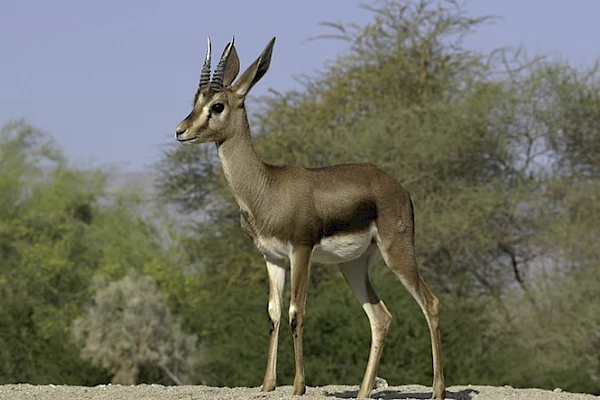
Usually found in small herds, rarely exceeding seven individuals, it is the only surviving gazelle endemic to the area north of the Sahara Desert. Its coat is dark fawn in color with distinctive dark brown lateral bands, and dense due to the cold desert climate of its mountainous habitats. Both males and females have curved ridged horns.
It is herbivorous, sometimes living in areas of sparse vegetation, but will seek out cultivated fields, mainly feeding in morning and late afternoon on grasses, herbage and bushes. It can utilize water found in plants as well as dew. Man is now the main predator, but cheetah, leopard, lion, serval, caracal, jackal and eagles preyed on it in times past.
There are two calving seasons per year, from April to May and July to August, with births occurring after a gestation of approximately 160 days. Usually only one calf is born but there is a 40% chance of twinning with each pregnancy. They can live up to 12 years.
Cheetah
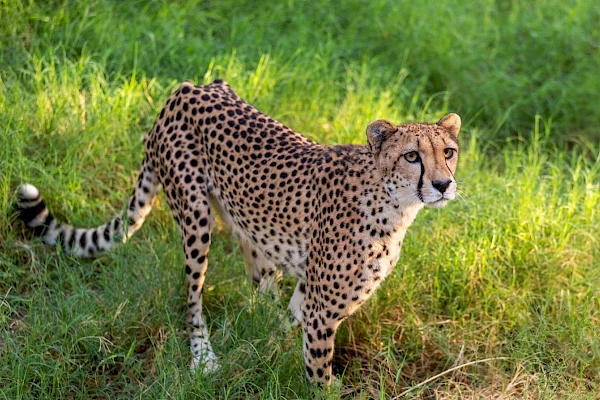
In just a few strides, a cheetah can run as fast as a car on the freeway. While running, the cheetah’s flat-shaped tail acts like the rudder of a boat, allowing swift turns midair with superior steering and balance.
After catching their prey, cheetahs must recover and eat quickly to avoid other predators that may drive them away from their meal.
Cheetahs are primarily threatened by habitat loss and human-wildlife conflict. The Living Desert actively participates in cheetah conservation in the international Cheetah Public Engagement program for the Saving Species From Extinction Program and a number of international cheetah conservation organizations
Naked Mole Rat
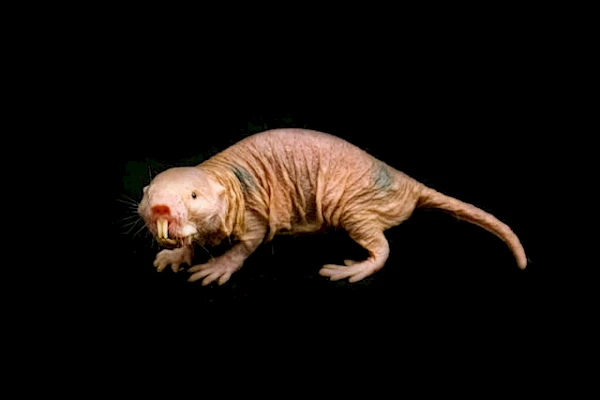
Banded Mongoose are highly social creatures, forming close-knit groups, and showcasing strong community bonds. They have a diverse diet and are known for their distinctive dark bands contrasting their golden-brown backs in the wild.
Nigerian Dwarf Goat

Nigerian dwarf goats are a West-African breed that has been domesticated and is now found worldwide. They come in a variety of colors and color combinations in black, white, chocolate, red, and gold. Their nose is fairly straight with upright ears and a short to medium length coat. Nigerian dwarf goats stand anywhere from one to two feet tall at the shoulder and can weigh 60-80 pounds.
Nigerian dwarf goats are a dairy goat that can produce a large amount of milk for their size. On average they produce two and a half pounds of milk per day during their lactation period.
Female goats are fertile year round and can have one to six kids, two being the usual, number. Kids are approximately two pounds at birth and grow very quickly.
Cape Porcupine
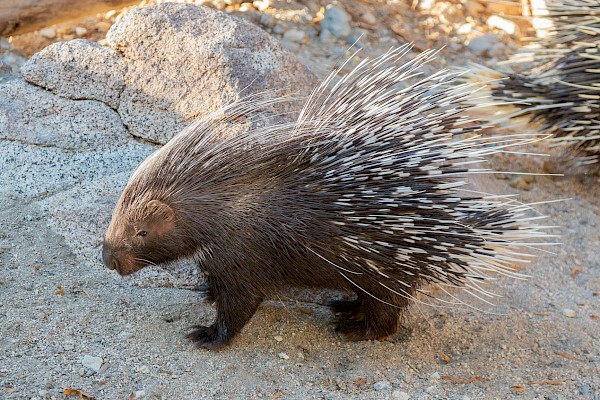
They are mostly vegetarians, feeding on wild roots, bulbs, berries and other plants. In cultivated areas they eat groundnuts, potatoes, pumpkins, melons and maize. Lions have been known to prey on Cape Porcupine.
Adults grow to 25-29 inches long and weigh from 20-66 pounds. The quills on the neck and back are black and white and the tips of the tail quills can range up to 20 inches long. They make a rattling sound when the porcupine feels threatened. It is sometimes called a crested porcupine because some quills can be erected into a crest, which starts at the top of the head and extends to the shoulder.
Females produce 2 to 3 litters of 1 or 2 young every year, in a grass-lined burrow. Babies are covered with bristles and soft quills which harden a few hours after birth. The mother nurses them from teats located on the sides of her body, away from her quills.
When attacked or annoyed, porcupines raise their quills and rattle them vigorously to scare off predators. They may charge sideways or backward, detaching quills into the flesh of the attacker. Once barbed quills enter the skin, they are almost impossible to remove and the wounds become infected, eventually killing the attacker.
Black Rhinoceros

Black rhino are browsers and have a prehensile upper lip that allows them to easily eat trees and shrubs. They are more solitary than other rhino species; however, females can be found at watering holes, while males stay alone.
Together, a group if rhinos is called a ‘crash’. Although rhinos have poor eyesight, they communicate with each other through vocalizations, sneezes, and by scent. Black rhinos are not black at all, but rather dark gray. They are constantly coated in a mud coat to help keep them cool and prevent insect bites.
Rhinos mothers are very attentive and protective of their calves. Rhino calves stay with their mothers for up to four years. Black rhino have two horns that are made of keratin – the same material as human fingernails, animal hooves, bird feathers and beaks, and reptile and fish scales. Threat: Poaching for their horns, illegal wildlife trade.
Sand Cat
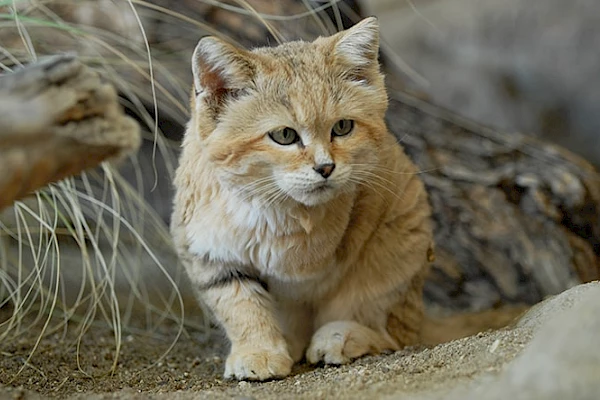
Slightly smaller than a domestic cat, it has short legs, a wide head and large tapered ears. Head to tail 32”, 10” tall and weighs 4-5 pounds. Pale sandy with white belly, reddish streak from eye across cheek, some dark striping on legs and tail. Tail has a black tip.
Well adapted to desert. Conserves water by spending the heat of the day in a burrow or in the shade. Fur on soles of feet insulate against the burning heat of the ground as well as giving traction on loose sand. Its loud barking call communicates over vast areas of desert (sound does not carry well in dry air). And like many other desert animals, it can live without drinking free water; it gets sufficient moisture from the bodies of its prey.
Serval
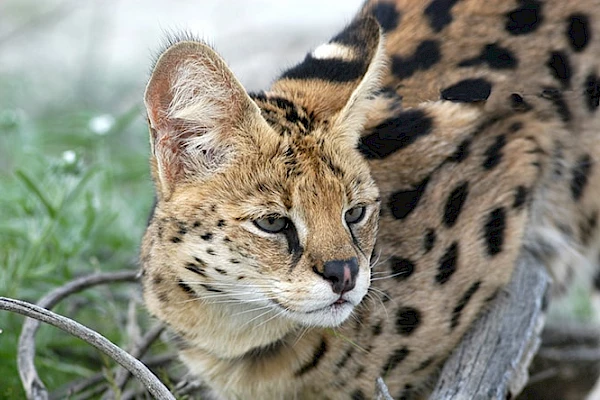
The serval is one of seven species of small to medium-sized African cats. It is slender and long-legged with hind legs longer than front legs. Its head is small, with large rounded ears to help find prey, a long neck and a yellowish tan coat with black markings–different for each serval–to break up its outline, and a light colored underside. Males are slightly larger than females.
Their territories cover up to 5 square miles in areas with good cover for hunting and a water source They eat a wide variety of prey including rodents, small ungulates, birds, lizards, frogs and insects. They require a fresh kill and will eat carrion only under extreme circumstances. Their natural enemies are hyenas, African wild dogs and leopards.
Servals only pair up for mating. A litter of 1-3 kittens is born in a den during the summer months and they are moved frequently to new hiding places. The mother raises her kittens alone and must leave them frequently to hunt. When the kittens are large enough to hunt, males are driven away first, while females stay with their mother until they become sexually mature when they will be driven away to establish their own territories.
Silician Dwarf Donkey
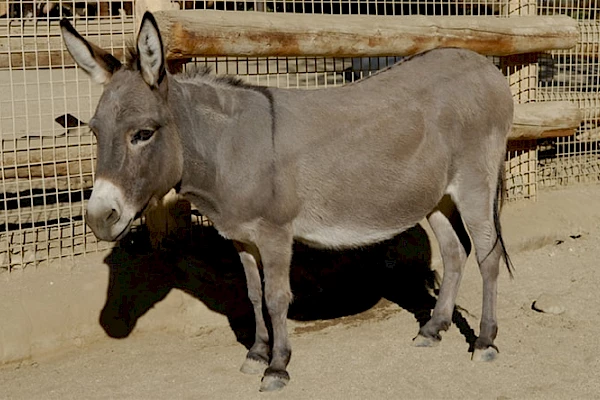
This is a miniature breed of donkey, whose coat comes in various colors (black, brown, white or spotted), but is most commonly gray. They are only 28 to 38 inches tall at the withers (shoulder) and weigh between 250 to 450 pounds. They eat hay, grass, oats and grain and graze from dawn until late morning and then again in late afternoon. In open range, they may be susceptible to large carnivores.
Donkeys are widely distributed and can be found almost everywhere in the world. However, true wild asses originated in the undulating deserts of northern Africa and the Arabian Peninsula and are well-adapted for life in the desert. Domestic donkeys prefer warm, dry climates, and if left to become feral, they will return to such a habitat if possible, for instance, the wild population in Death Valley.
Breeding occurs primarily during late spring to early fall and after a gestation of about 11 months, one foal is born. They usually reach maturity at around the age of 1 or 2. They are highly resistant to diseases, and remain healthy into old age, which can be over forty years.
